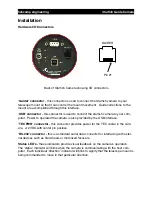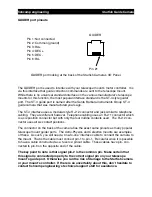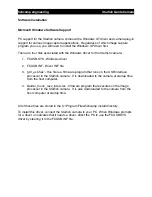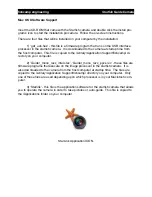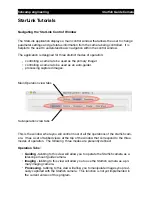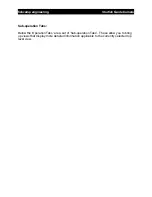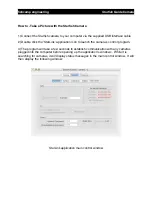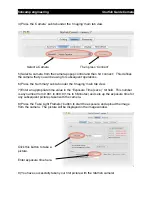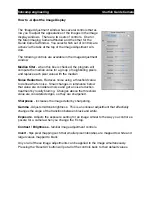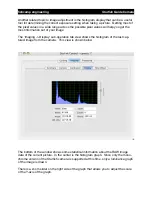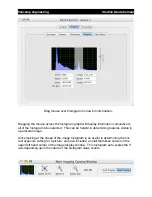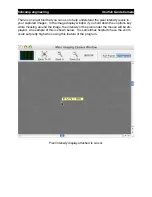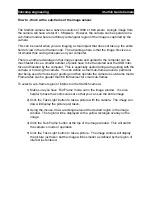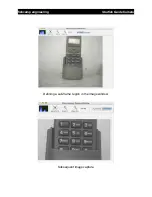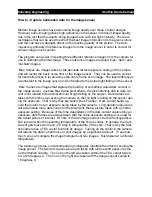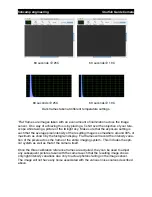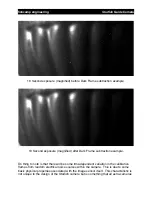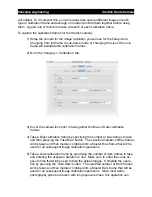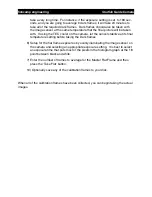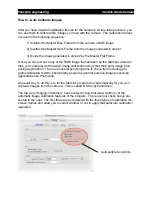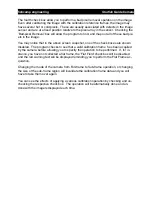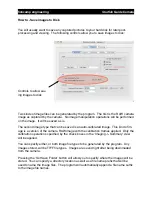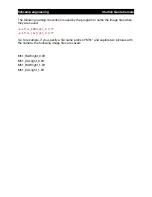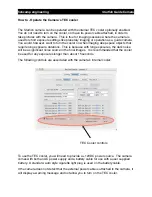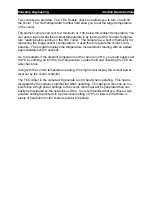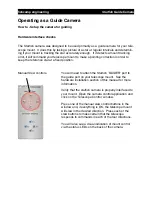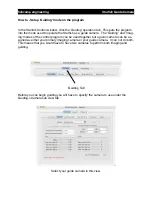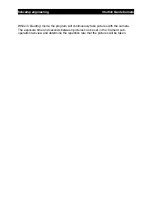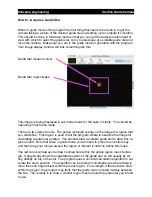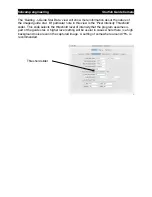
How to - Capture Calibration data for the image sensor
Modern image sensors have astounding image quality over those of older designs.
However, astro-imaging places high demands on the sensor in terms of image quality
due to the fact that the objects being imaged have such low light intensity. There are
techniques that can be used to extract the best image information from a given picture
and this can have a dramatic effect on the resulting quality of the picture. The tech-
niques rely primarily on reference images from the image sensor in order to correct for
various image noise sources.
The program can assist in creating three different reference images from the camera for
use in calibrating the final image. These reference images are called
‘
bias
’
,
‘
dark
’
, and
‘
flat-field
’
images.
‘
Bias
’
frames are images taken at the absolute fastest exposure setting of the camera
and will record the basic noise floor of the image sensor. They can be used to correct
for fixed differences in levels across the entire frame of an image. The level differences
are inherent in the image sensor and not related to the actual light falling on the sensor.
‘
Dark
’
frames are images that capture the build up of something called dark current in
the image sensor. Just like Bias frame pixel offsets, the pixel intensity due to dark cur-
rent is not related to the actual amount of light falling on the sensor. Dark frames are
taken with the lens cap covering the camera so that no light is falling on the sensor dur-
ing the exposure. That is why they are called
‘
Dark Frames
’
. Dark current builds up
over the duration of an exposure being taken by the camera. Long duration exposures
will accumulate more dark current in the pixel wells than a picture taken with a shorter
exposure setting. Because of this time dependancy in the dark current captured by an
exposure, dark frames are always taken with the same exposure setting as is used for
the actual picture of interest. Of note, is that an image sensor
’
s dark current specifica-
tion is lower when the operating temperature of the chip is colder. In general, the dark
current gets halved for each ~7C drop in temperature of the chip. That is why the Star-
fish camera has a TEC cooler built into its design. Turning on the cooler in the camera
will reduce the dark current noise in your images by a significant amount. To see how
much, you can compare the image histograms of two images. Each taken at a different
temperature.
The following pictures, and accompanying histograms, illustrate the effect of cooling the
image sensor. The two dark frames were each taken with a 60 second exposure time
on the Starfish camera. The one on the left was taken, without the TEC cooler turned
on, at 25 degrees C. The one on the right was taken with the image sensor cooled to
10 degrees C.
fishcamp engineering
Starfish
Guide Camera

